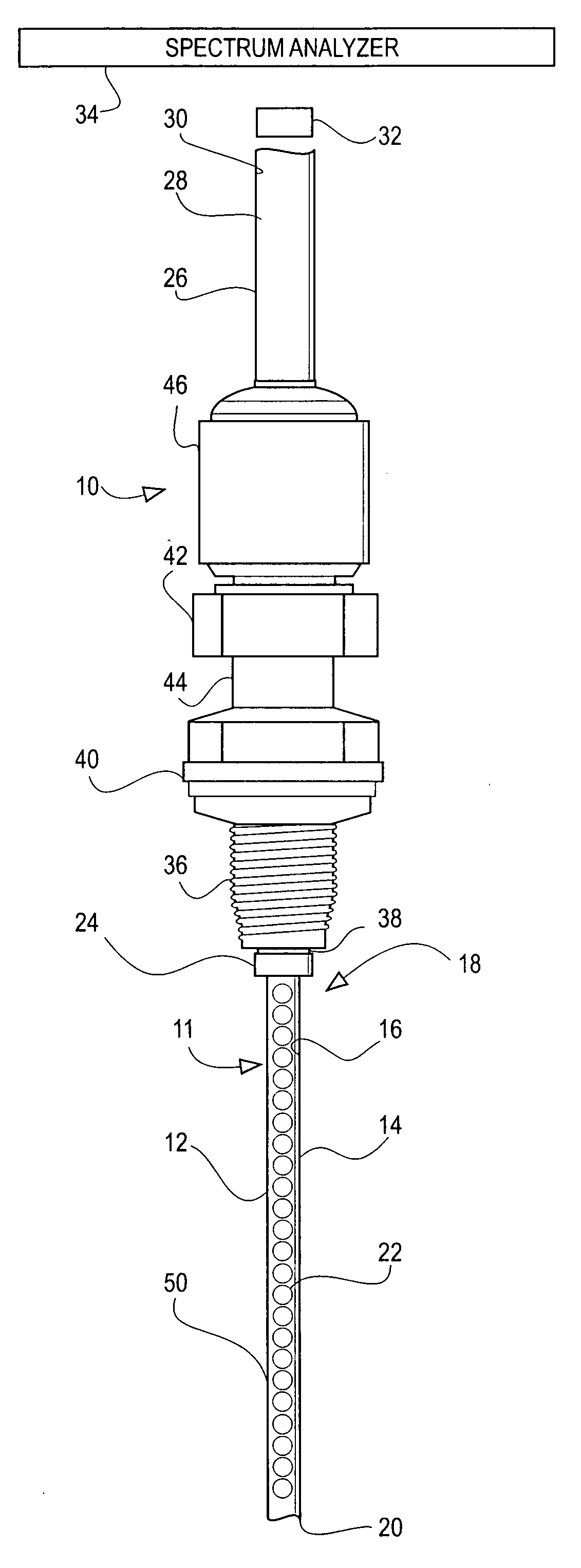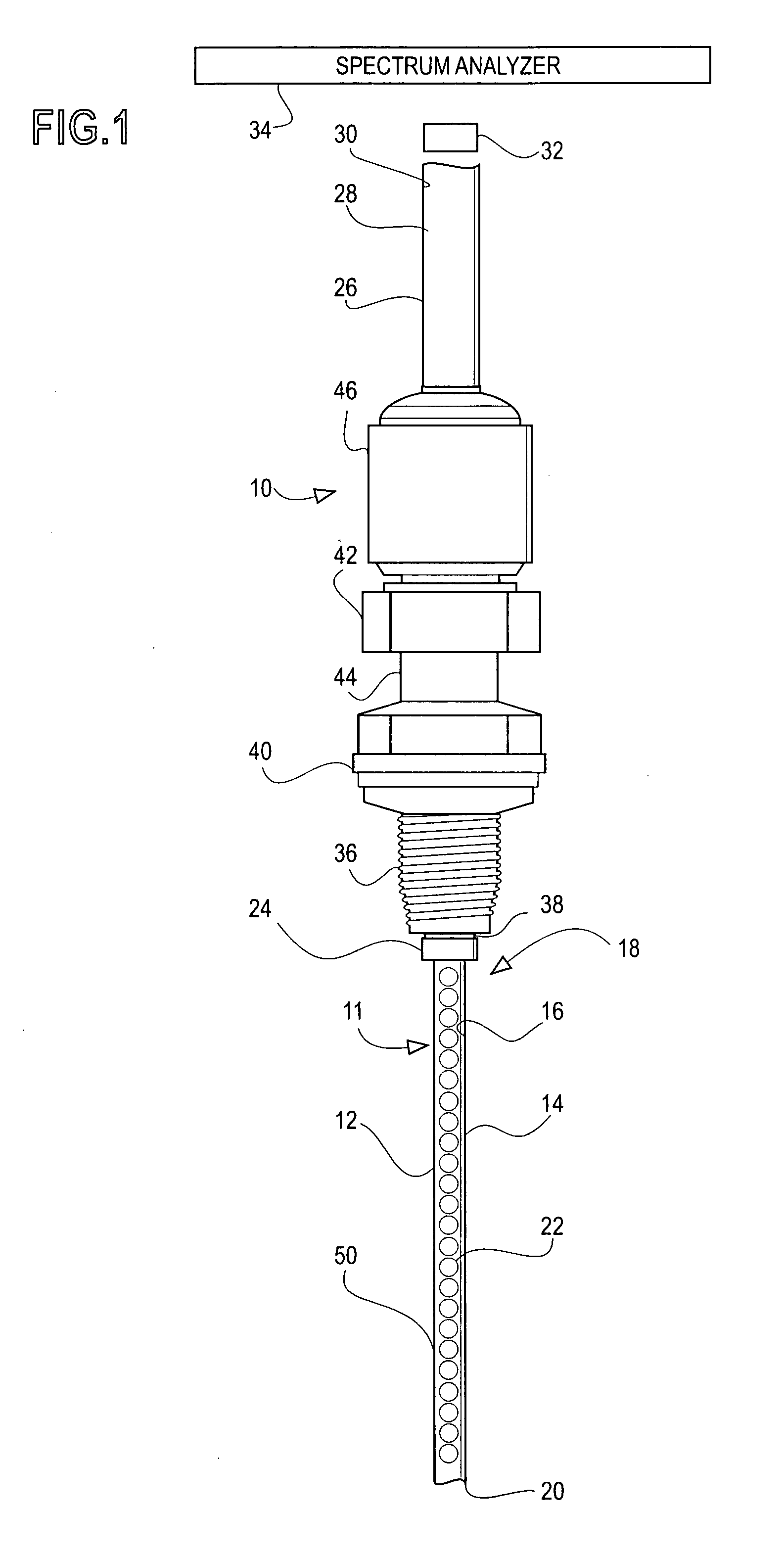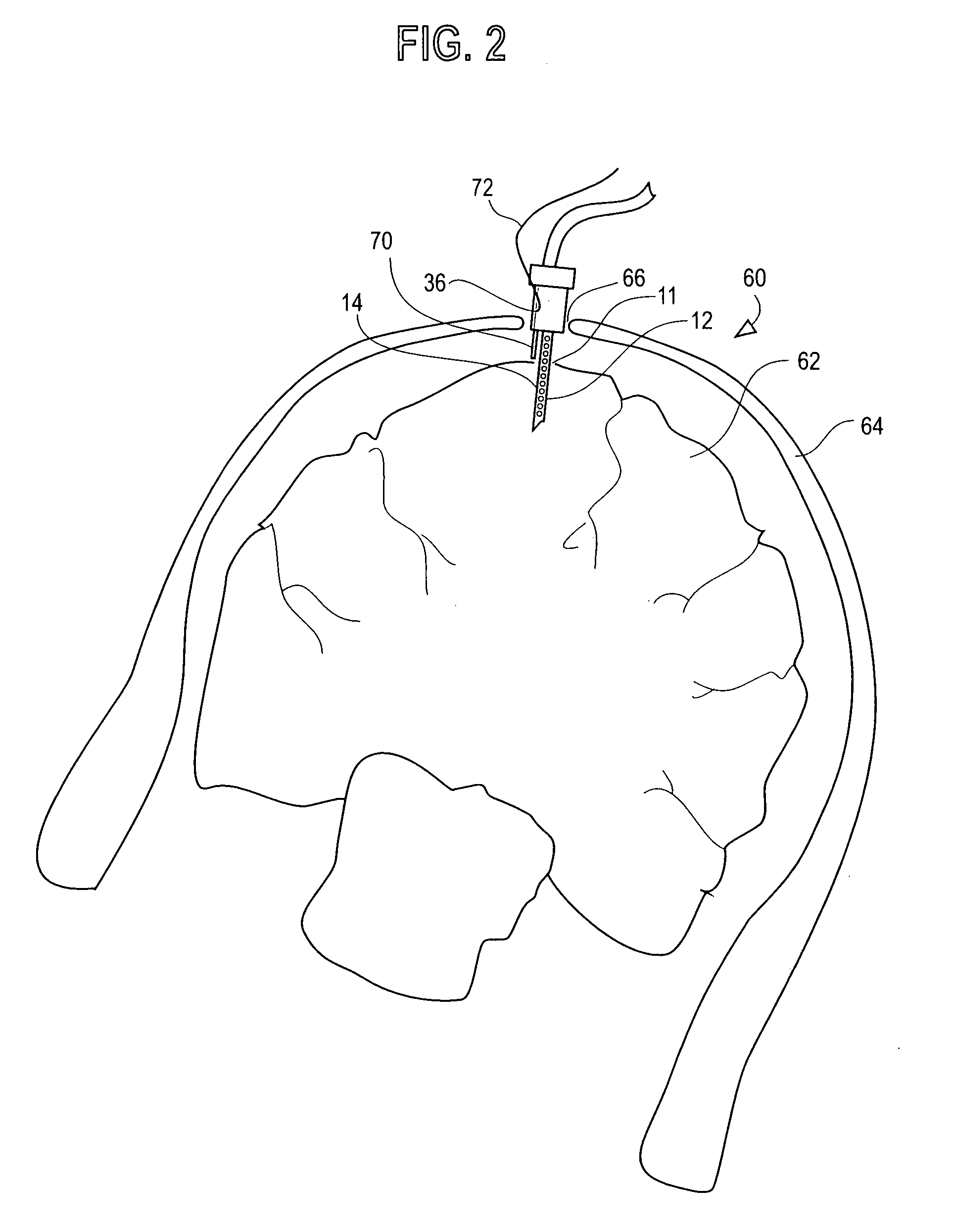Water content probe
a technology of water content and probe, applied in the field of water content probe, can solve the problems of risking the health of patients, inaccurate measurement, and inability to establish a baseline measuremen
- Summary
- Abstract
- Description
- Claims
- Application Information
AI Technical Summary
Problems solved by technology
Method used
Image
Examples
Embodiment Construction
[0021]While the present invention is capable of embodiment in various forms, there is shown in the drawings and will hereinafter be described a presently preferred embodiment with the understanding that the present disclosure is to be considered as an exemplification of the invention, and is not intended to limit the invention to the specific embodiment illustrated.
[0022]In accord with one embodiment of the invention, a combined probe 10 for measuring brain wetness and intracranial pressure is shown in FIG. 1. The probe 10 has a water content sensor 11 which has two conductive plates 12 and 14 on opposite sides of a printed circuit board (PCB) substrate 16. The conductive plates 12 and 14 are silver in the preferred embodiment but any suitable conductor material may be used. The substrate 16 in the preferred embodiment measures 5 cm in length, 2 mm in width, and 0.5 mm in depth. The probe 10 has a proximal end 18 and a distal end 20. Multiple holes 22 extend across the PCB substrate...
PUM
 Login to View More
Login to View More Abstract
Description
Claims
Application Information
 Login to View More
Login to View More - R&D
- Intellectual Property
- Life Sciences
- Materials
- Tech Scout
- Unparalleled Data Quality
- Higher Quality Content
- 60% Fewer Hallucinations
Browse by: Latest US Patents, China's latest patents, Technical Efficacy Thesaurus, Application Domain, Technology Topic, Popular Technical Reports.
© 2025 PatSnap. All rights reserved.Legal|Privacy policy|Modern Slavery Act Transparency Statement|Sitemap|About US| Contact US: help@patsnap.com



